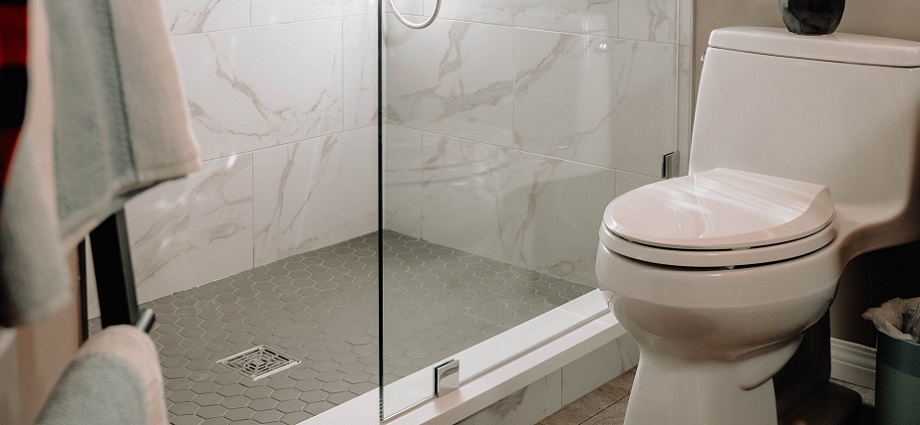If you’re dealing with gallstone issues, you’re not alone. Gallstones are a common condition that affect millions of people worldwide. These small, hard deposits form in the gallbladder and can cause severe pain and discomfort. As you navigate through this challenging experience, you may find yourself wondering: what do gallstones look like in the toilet.
Gallstones can have various shapes, colors, and sizes depending on their location, although they are typically yellowish and diamond-shaped. As a result, it can be challenging to identify them, leading to confusion about what you may see in the toilet.
Understanding Gallstones
Gallstones are solid masses that form in the gallbladder, a small organ located under the liver. The gallbladder plays a crucial role in digestion by storing bile, a fluid produced by the liver that helps break down fats in the small intestine. Gallstones can vary in size, shape, and composition, but most are made up of cholesterol or bilirubin, a waste product of red blood cell breakdown.
Gallstones can develop for several reasons, including an imbalance in the bile composition, slow gallbladder emptying, or an overactive gallbladder. Other risk factors for gallstone formation include obesity, a high-fat diet, genetics, and certain medical conditions like diabetes and liver disease.
What Do Gallstones Look Like In The Toilet?
Gallstones are solid formations that develop in the gallbladder, a small organ located in the upper right side of the abdomen. When these stones become dislodged from the gallbladder, they can pass through the bile ducts and eventually be eliminated from the body through bowel movements. If you suspect that you have passed gallstones in the toilet, here are some possible appearances they may have:
Color and Texture: Gallstones can vary in color and texture, depending on their composition. Common types of gallstones include cholesterol stones, which are usually yellow or green, and pigment stones, which can be dark brown or black. Cholesterol stones are typically smooth and can have a greasy or waxy texture, while pigment stones are often smaller and harder.
Shape and Size: Gallstones can come in various shapes and sizes, ranging from tiny pebble-like stones to larger irregular-shaped stones. They can be round, oval, or even polygonal in shape. Some gallstones may appear as small, grainy particles, while others can be larger and more solid. The size of gallstones can also vary greatly, with some being as small as a grain of sand and others as large as a golf ball.
Floating Gallstones: In some cases, gallstones may float in the toilet bowl due to their composition and density. Cholesterol stones, being lighter than water, may float on the surface of the toilet water, while pigment stones may sink to the bottom due to their higher density.
Solid Masses: Gallstones can sometimes appear as solid masses in the toilet, especially if they are larger in size. They may be visible to the naked eye and may have a distinct appearance compared to regular stool. Gallstones may range in color, shape, and texture, as mentioned earlier, but they are usually solid and can be easily identified.
What Are the Symptoms of Gallstones?
Gallstones are often referred to as “silent stones” because they may not cause any symptoms in some individuals. However, when gallstones become lodged in the bile ducts or cause inflammation of the gallbladder, they can cause a range of symptoms. Here are some common symptoms associated with gallstones:
Abdominal Pain: Abdominal pain is a hallmark symptom of gallstones, usually felt in the upper right side of the abdomen just below the rib cage. The pain is often sudden and intense, described as sharp or stabbing, and may come and go lasting for minutes to hours. It may also radiate to the back, shoulder, or chest.
Nausea and Vomiting: Gallstones can cause nausea and vomiting, particularly after a meal that is high in fat. The nausea may be accompanied by vomiting, which can provide temporary relief from the pain. However, repeated episodes of nausea and vomiting can lead to dehydration and electrolyte imbalances.
Indigestion and Bloating: Gallstones can disrupt the normal flow of bile from the gallbladder to the intestine, leading to indigestion and bloating. Individuals with gallstones may experience discomfort or a feeling of fullness in the upper abdomen, along with burping or excessive gas.
Jaundice: When a gallstone becomes lodged in the bile ducts, it can block the normal flow of bile from the liver to the intestine, leading to jaundice. Jaundice is characterized by yellowing of the skin and eyes, dark urine, and pale stools. It may also be accompanied by itching and fatigue.
Fever and Chills: If a gallstone causes inflammation of the gallbladder, it can lead to fever and chills. This is typically a sign of an infection and may be accompanied by other symptoms such as abdominal pain, nausea, and vomiting.
Changes in Stool Color: Gallstones can sometimes cause changes in the color of stools. Stools may appear pale or clay-colored due to the blocked flow of bile from the liver to the intestine.
Painful Attacks: Gallstones can cause sudden and severe pain episodes, called gallstone attacks or biliary colic. These attacks can occur irregularly and last from a few minutes to several hours, often triggered by eating high-fat meals. Other symptoms may include nausea, vomiting, and bloating.
What to Do if You Think You’ve Passed Gallstones
If you believe that you have passed gallstones in the toilet, it’s important to take appropriate steps to manage your condition. Please take into consideration the following points:
Seek medical advice: If you suspect that you have passed gallstones, it’s crucial to consult with a healthcare professional for proper evaluation and diagnosis. They can assess your symptoms, review your medical history, and conduct tests to confirm the presence of gallstones.
Discuss treatment options: Depending on the size, composition, and severity of your gallstones, your healthcare professional may recommend different treatment options. These may include lifestyle changes, medication, or even surgery to remove the gallbladder in some cases. It’s important to have a thorough discussion with your healthcare professional about the best treatment approach for your specific situation.
Take preventive measures: If you have a history of gallstones or are at risk of developing them, it’s important to take preventive measures to minimize your risk. This may include maintaining a healthy diet, staying hydrated, exercising regularly, and managing any underlying health conditions such as obesity or diabetes.
Monitor your symptoms: Keep a close eye on your symptoms and seek medical attention if you experience severe pain, jaundice (yellowing of the skin or eyes), or other concerning symptoms. Gallstones can sometimes cause complications such as infection, inflammation, or blockage of the bile ducts, which may require immediate medical attention.
Follow your healthcare professional’s advice: Once you have been diagnosed with gallstones, it’s crucial to follow your healthcare professional’s advice and treatment plan diligently. This may include taking prescribed medications as instructed, making dietary and lifestyle changes, and attending regular follow-up appointments to monitor your condition.

How Are Gallstones Treated?
The treatment approach for gallstones depends on various factors such as the severity of symptoms, the size and location of the gallstones, and the overall health of the individual. In some cases, gallstones may not require treatment if they are asymptomatic or not causing any complications. However, if gallstones are causing symptoms or complications, treatment options may include:
Lifestyle Changes: Lifestyle and diet changes can help manage gallstones, such as avoiding high-fat foods, maintaining a healthy weight, eating a balanced diet with fiber, and staying hydrated. Regular exercise and avoiding rapid weight loss or crash diets can also be beneficial.
Medications: Medications like pain relievers (acetaminophen or NSAIDs) can manage gallstone symptoms. UDCA can dissolve cholesterol-based gallstones, but not all types. It may take months to years to be effective.
Endoscopic Retrograde Cholangiopancreatography (ERCP): ERCP is a minimally invasive procedure that combines endoscopy and X-ray imaging to remove gallstones from the bile ducts. A thin tube with a light and a camera (endoscope) is passed through the mouth and into the small intestine to locate and remove the gallstones from the bile ducts using specialized instruments.
Laparoscopic Cholecystectomy: Laparoscopic cholecystectomy is a common surgical procedure used to remove the gallbladder. It involves making small incisions in the abdomen and using specialized surgical instruments and a camera to remove the gallbladder. This procedure is minimally invasive, resulting in less scarring, shorter recovery time, and lower risk of complications compared to open surgery.
Open Cholecystectomy: In some cases, open cholecystectomy may be necessary if laparoscopic cholecystectomy is not feasible due to certain factors such as severe inflammation, scarring, or other complications. Open cholecystectomy involves making a larger incision in the abdomen to remove the gallbladder. It may require a longer recovery time and may result in more scarring compared to laparoscopic surgery.
Preventing Gallstones
Although it is not possible to prevent all cases of gallstones, you can take steps to reduce your risk. Here are a few tips:
Maintain a healthy weight: Being overweight or obese can increase the risk of developing gallstones. Keeping a healthy weight through a balanced diet and physical activity can help decrease this risk.
Eat a healthy diet: Consuming a diet that is rich in fiber and low in saturated fats can assist in the prevention of gallstones. It is advisable to incorporate ample amounts of fruits, vegetables, whole grains, and lean proteins in your diet.
Stay hydrated: Drinking plenty of water can help prevent the bile in your gallbladder from becoming too concentrated, which can reduce your risk of developing gallstones.
Exercise regularly: Regular exercise can help maintain a healthy weight and reduce your risk of developing gallstones.
Talk to your healthcare provider: If you have a family history of gallstones or other risk factors, talk to your healthcare provider about ways to reduce your risk.
Read about remove gallstones without surgery
Conclusion
In conclusion, if you suspect that you have passed gallstones in the toilet, it’s essential to consult with a healthcare professional for proper evaluation, diagnosis, and management of your condition. Identifying gallstones in the toilet can be challenging, as their appearance can vary greatly. It’s crucial to follow your healthcare professional’s advice and treatment plan diligently to ensure proper management of your gallbladder health. Remember, prevention is always better than cure, so maintaining a healthy lifestyle, staying hydrated, and managing underlying health conditions can help reduce the risk of developing gallstones. Don’t hesitate to seek medical attention if you experience severe pain or other concerning symptoms related to gallstones. Your healthcare professional is the best resource for accurate diagnosis and management of gallstone issues. Stay proactive about your health and take steps to ensure the well-being of your gallbladder!











